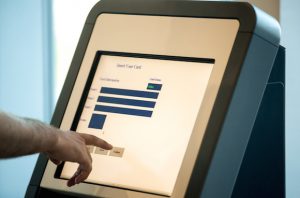Many fliers have acclimated to some airline fees, especially since there’s a way to get around them. Take the checked bag fee: pack light and you can bring your bag onboard for free (on most fares and airlines); get the right airline credit card and there’s no checked bag fee. Or fly Southwest which allows two free checked bags.
The fee charged for bringing a pet onboard? Look, I love my dog, but bringing an animal into the cabin poses a risk. A plane can make an emergency landing if Fido has an “accident,” or if he or she bites another passenger (this has all happened), or if a passenger sues the airline after suffering a near-fatal allergic reaction. So there is a cost to the airline to let pets in the cabin, potentially, and they’re covering their liability with the fee. OK, reasonably fair.
But the change fee on non-refundable airfares? Not so fair. In 2015, airlines charged over three billion dollars in change fees.
What’s the real cost to the airline to change your ticket? When you cancel your flight, especially if you got a good deal, the airlines, which now fly with 85% of seats filled, are immediately going to resell your seat, probably for a higher fare if you cancel close to flight time (or they’ll use your empty seat to accommodate standby passengers, who are probably paying a fee to standby, or with last-minute fliers who will be charged much more than your discounted fare).
Note that airlines don’t pay a fee when they change your schedule, except in very limited circumstances.
Does it really cost an airline $200 to change your date of travel or cancel a trip? And that’s for domestic fares. It’s much more for international ones, sometimes $400 or more. You do the work yourself on a computer. It doesn’t cause the airline lost revenue in extra employment expense. I mean, how much do airline reservationists get paid? It takes 10 minutes maximum to change a flight by phone. But most changes and cancels are done online—by you.
How to Avoid Plane Ticket Change Fees
Other than never having a change in plans or buying a refundable fare? It’s hard, but not impossible. Again, fly Southwest. Southwest doesn’t charge for changes and cancels and it’s doing very well financially.
Some airlines charge less for a change fee, so if there’s a possibility you’ll need to alter your reservation, book with these airlines:
Alaska, fairly, doesn’t charge for changes made 60 or more days ahead of travel. Otherwise, it’s $125. Frontier charges $99 for changes (and you can assign the ticket to another passenger for even less); JetBlue charges $75 if made 60 or more days from departure and within 60 days of travel on fares under $100; $100 for fares $100-$149, and $150 for fares $150 or greater.
Another way to avoid the fee: if you’ve used the right credit card, and the cancellation is due to an illness or injury to you or a relative or traveling companion, you can get the fee refunded by the credit card company. Travel insurance, if you bought it, might also provide a refund for the same reasons.
Another way: pray that your flight is canceled or changed. If you need to cancel a flight and the airline changes the schedule (a 9 a.m departure becomes a 6 a.m.) or the itinerary (a nonstop becomes a connecting flight, for example), you can ask for a full refund, even on a non-refundable fare.
And finally, throw yourself at their mercy. If there’s a death in the family (and you can prove it with a funeral director’s invoice for example), try that.
And the much-hated Basic Economy fares launched by American, Delta, and United can’t be changed at all, fee or no fee, a policy copied from Spirit Airlines.
So why do airlines charge this fee at all? Well, one explanation, besides, of course, padding their bottom lines, is simple: the higher the fee goes up (it used to be free on all airlines, $50 in the 1990s, then $100, then $150, then $200 when in 2013 United further increased the fee, to be followed soon after by most other airlines, and it will probably go up again), the more likely travelers—especially business travelers—will buy more expensive refundable airfares. As the price difference between non-refundable and refundable lowers, the incentive to buy refundable fares, which can be changed without a fee, becomes greater. In fact, many corporate travelers trying to achieve minimum spends to qualify for frequent-flier status, may even convince their corporate travel departments to allow them to buy higher-priced refundables, arguing “There’s a good chance I’ll need to change my flight,” or simply to give themselves flexibility if a meeting is canceled or runs shorter than originally planned, so they get home that much sooner.
Think about it: if the average airfare is $500 and one day the change fee goes up to $400, wouldn’t you just buy the refundable? I’m not saying the fee will ever go up that high. Or am I? Maybe airlines will just make all low fares non-refundable, a process they’ve already tested by offering non-refundable “basic economy.”






